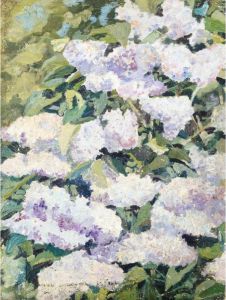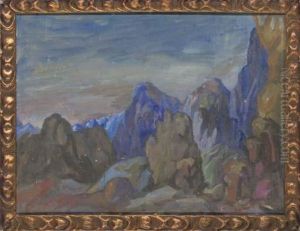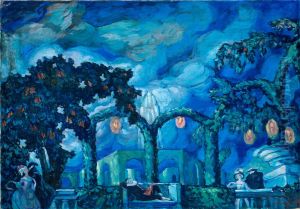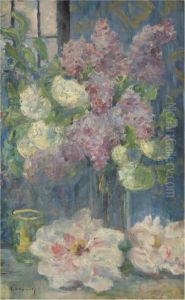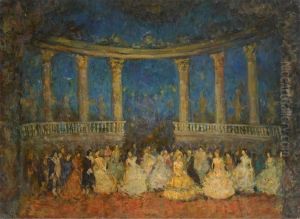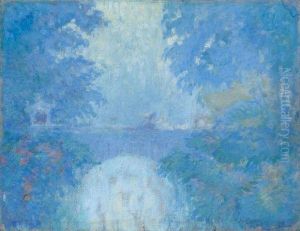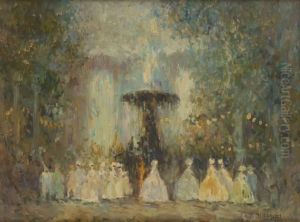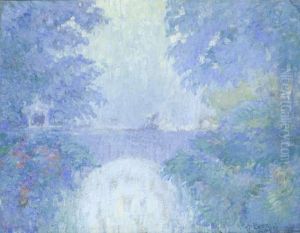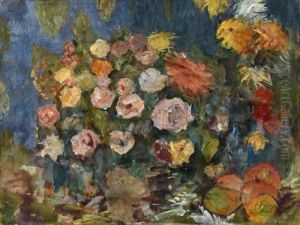Nikolai Nikolaievich Sapunov Paintings
Nikolai Nikolaievich Sapunov was a Russian painter and stage designer associated with the Mir Iskusstva (World of Art) movement, which embraced art nouveau and symbolism and sought to break away from the academic traditions of Russian art of the time. Born on June 8, 1880, in Moscow, he was one of the younger members of the movement, which included such luminaries as Alexandre Benois, Léon Bakst, and Sergei Diaghilev.
Sapunov studied at the Moscow School of Painting, Sculpture, and Architecture, where he was influenced by his teachers, Valentin Serov and Konstantin Korovin, both of whom were important Russian artists of the era. His early works were characterized by their lyrical and romantic qualities, often focusing on fairy-tale and folklore themes, which were common subjects in the works of Mir Iskusstva artists.
In 1900, Sapunov traveled to Paris, which was then the center of the art world. This experience exposed him to new artistic trends and movements, notably impressionism and post-impressionism, which would have a significant impact on his work.
Upon returning to Russia, Sapunov began to work closely with Diaghilev and the Mir Iskusstva movement, contributing illustrations to their eponymous magazine and participating in their exhibitions. His work during this period was marked by a vivid use of color and an elegant, decorative style. In addition to painting, Sapunov was also involved in theater and was renowned for his innovative stage designs, which integrated the aesthetics of Mir Iskusstva with the dynamic needs of the performing arts.
Tragically, Sapunov's life and promising career were cut short when he drowned while swimming in the Vuoksa River near Terijoki (now Zelenogorsk, Russia) on July 6, 1912. Despite his brief career, Nikolai Sapunov left a lasting impact on Russian art, contributing to the rich cultural tapestry of the early 20th century and paving the way for future generations of Russian artists.
